Offa's Dyke - Days 10, 11 and 12:
We found our relaxing rhythm during the final few days of our holiday. Our lack of a plan allowed us to follow our noses, and intuitively improvise an itinerary during each day. As you'll see from the photos below, we spent a lot of time focusing on four things: historic monuments, gardens, food and travel through beautiful places.
Our tenth day started with breakfast in Ruthin, at Gail's coffee and tea rooms on Upper Clwyd Street. Many of our stop overs have provided us with spectacular food and drink, and the vegetarian full cooked breakfast at this modest and out of the way cafe was up there with the best. Their friendly chef suggested a few sights to see in Ruthin and furnished us with a map. And so our typical modus operandi of chatting with locals and improvising on the spur of the moment led us to the grounds of Ruthin castle.
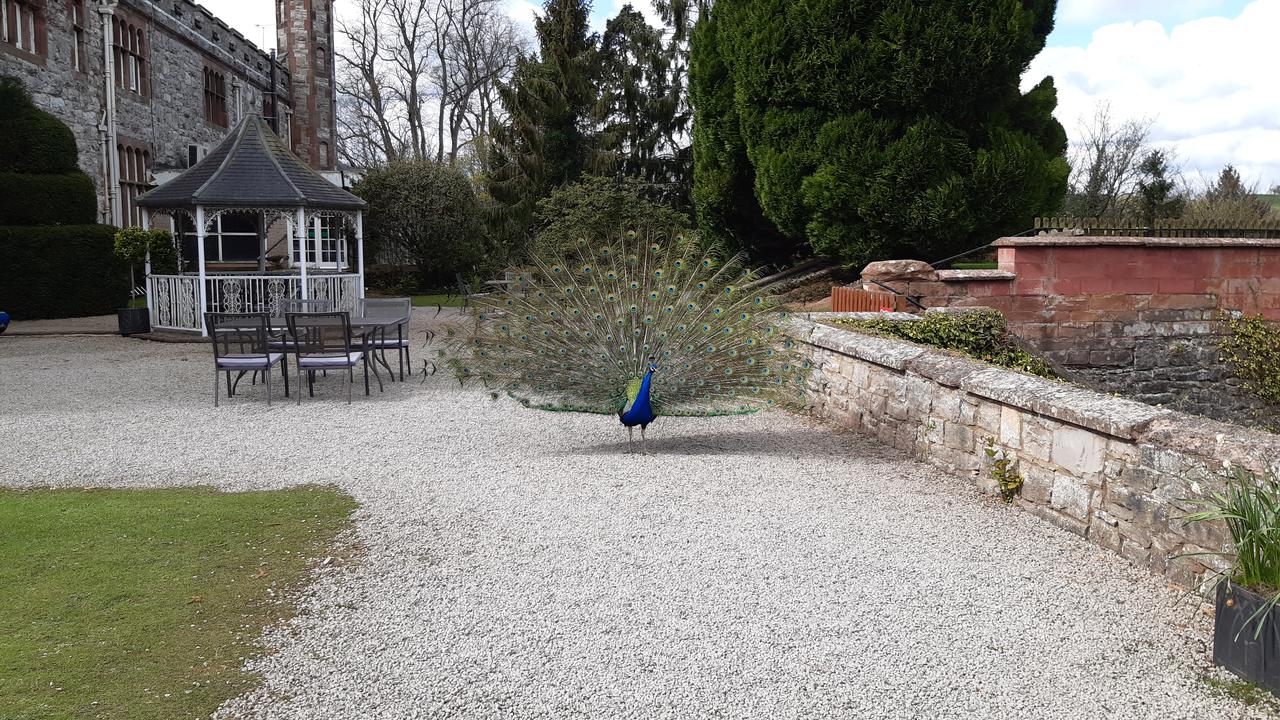
The chef at Gail's had explained the peacocks who live in the castle grounds were a friendly bunch, and we were not disappointed to find several of them displaying to the peahens.
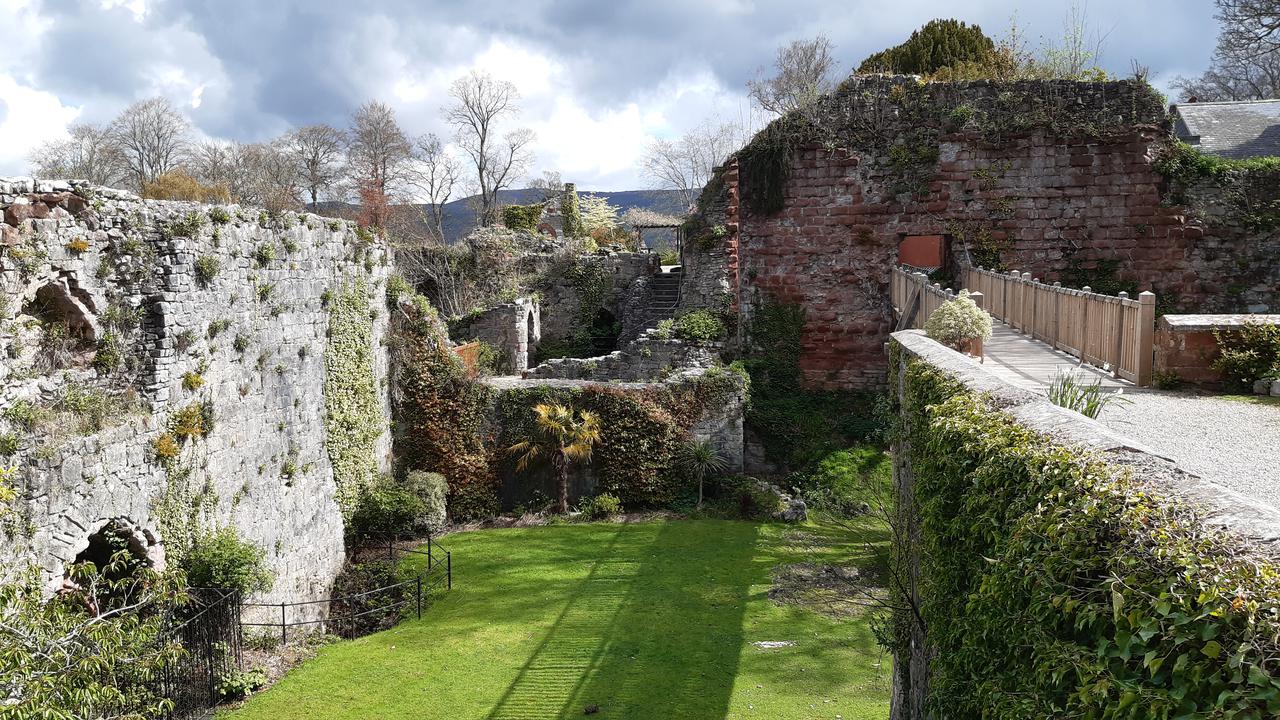
The castle itself was undergoing renovation, since the original fortified remains had been converted into a stately pile during the 19th century, and were now used as a hotel of some sort. With the abundance of dramatic castles in this part of the world, it was inevitable we'd find a few that had been repurposed.
Our chef at Gail's also suggested we visit the Ruthin Arts Centre, and we spent an extended period of time wandering the relatively small but open plan galleries. Both Mary and I particularly enjoyed the exhibition of husband-and-wife artists Pauline Burbridge and Charlie Poulsen. We immersed ourselves in the artworks and lost track of time... as we encountered the art in three distinct phases:
- slow wandering around the exhibition as we let our intuition guide us as we were drawn different pieces,
- a sort of inquisitive "deep dive" as we read the prose attached to the exhibitions and watched a couple of videos where the artists describe their works, process and intents,
- a recapitulation as we explore the exhibition one final time now that we're more familiar with the pieces, the artists and the story being told.

This was a wonderful state of mind to inhabit and we both wished there had been more of this to explore and encounter.
Having put us both in a thoughtful mood, and given the glorious weather, Mary suggested we go visit Bodnant garden to continue our pensive strolling. Since we had the car and we felt like touring through North Wales, we instructed the sat-nav and slowly wound our way to our destination.
We were not disappointed.
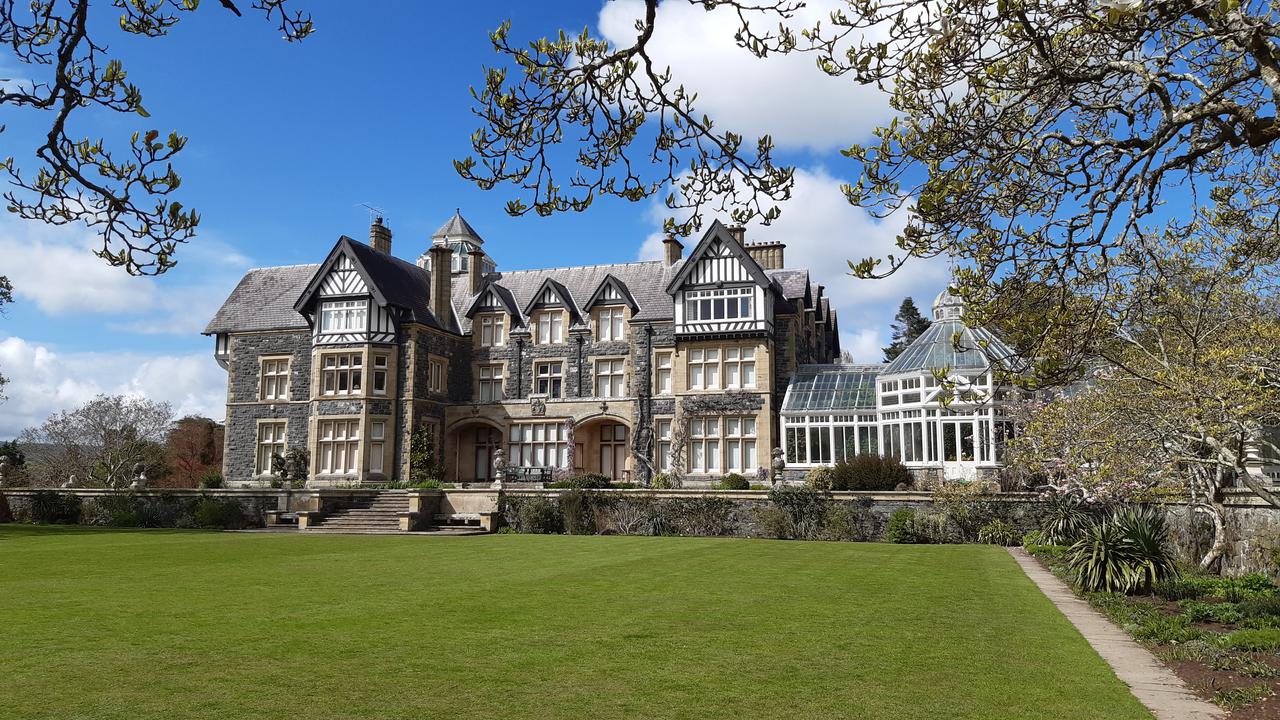
We found ourselves in a large and varied garden containing an abundance of benches on which we could both sit, look, listen and soak up our surroundings. I think my favourite aspect of the gardens were the woods containing paths and shallow brooks and many different sorts of tree and woodland life.
As with the art gallery, our slow meandering meant we encountered and re-encountered aspects of the garden in a manner that encouraged a slow and thoughtful attention to all the ways the garden stimulated our senses: the colourful floral displays, smell of pine, sound of running water or warmth of the sun touching our faces.
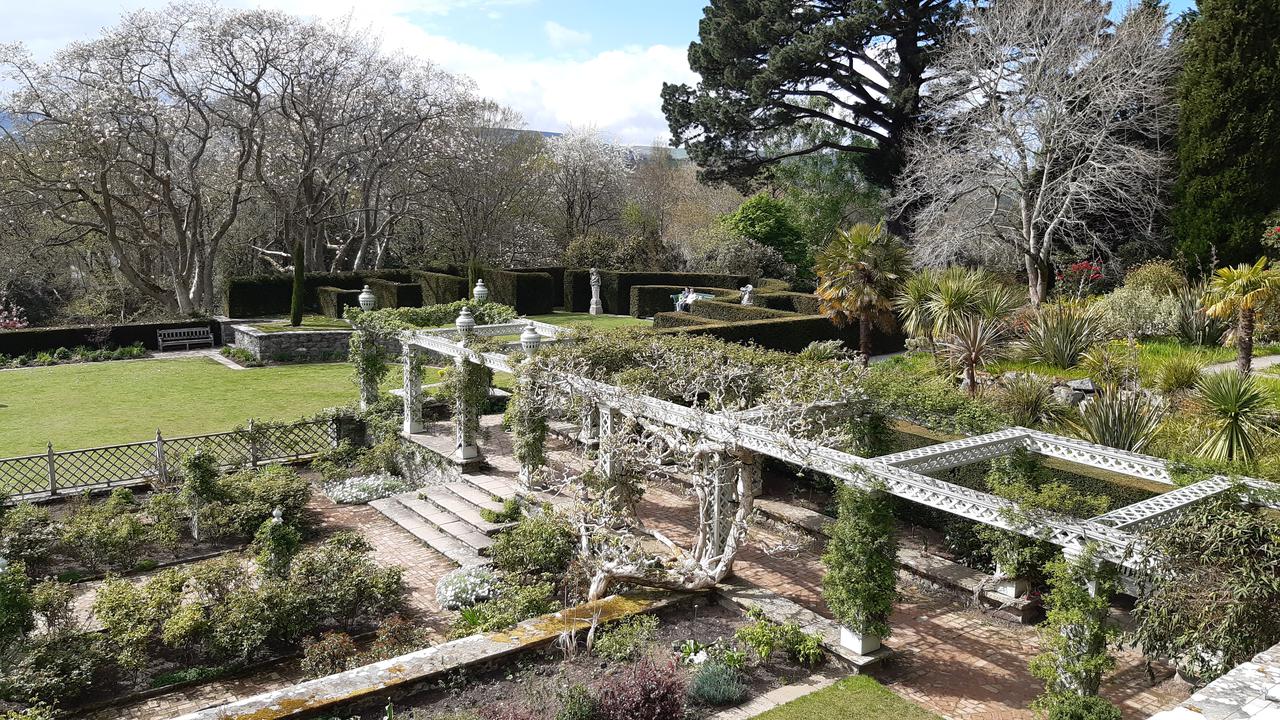
In the evening we found ourselves staying at a community run inn that was holding a quiz night. After an early dinner we joined the locals and had a friendly evening answering questions about such diverse topics as the game of Cluedo, Elton John's back catalogue, the plural noun for crows (it's a "murder" of crows, in case you're wondering), and other out of the way trivia. The quiz was both taken seriously, yet in a spirit of silliness, as many of the locals made humorous commentary of the emerging themes in the questions.
Once again, our modus operandi of chatting with locals and improvising on the spur of the moment led us to something fun.
Our penultimate day started with the realisation that it was our penultimate day. So, we decided to make use of the car and go visit the seaside, since that was the only type of terrain we'd not yet visited during our break. We chose to head towards Porthmadoc since it would mean driving through the beautiful Welsh mountain range called Snowdonia.
The journey was, indeed a sight to behold as we made our way to the coast, yet upon our arrival at Porthmadoc we both felt underwhelmed by the place. Wondering what our options might be, and in the spirit of improvisation, we spotted a castle on the coastline in the distance and pointed the car in that general direction only to pick up signs for Harlech Castle.
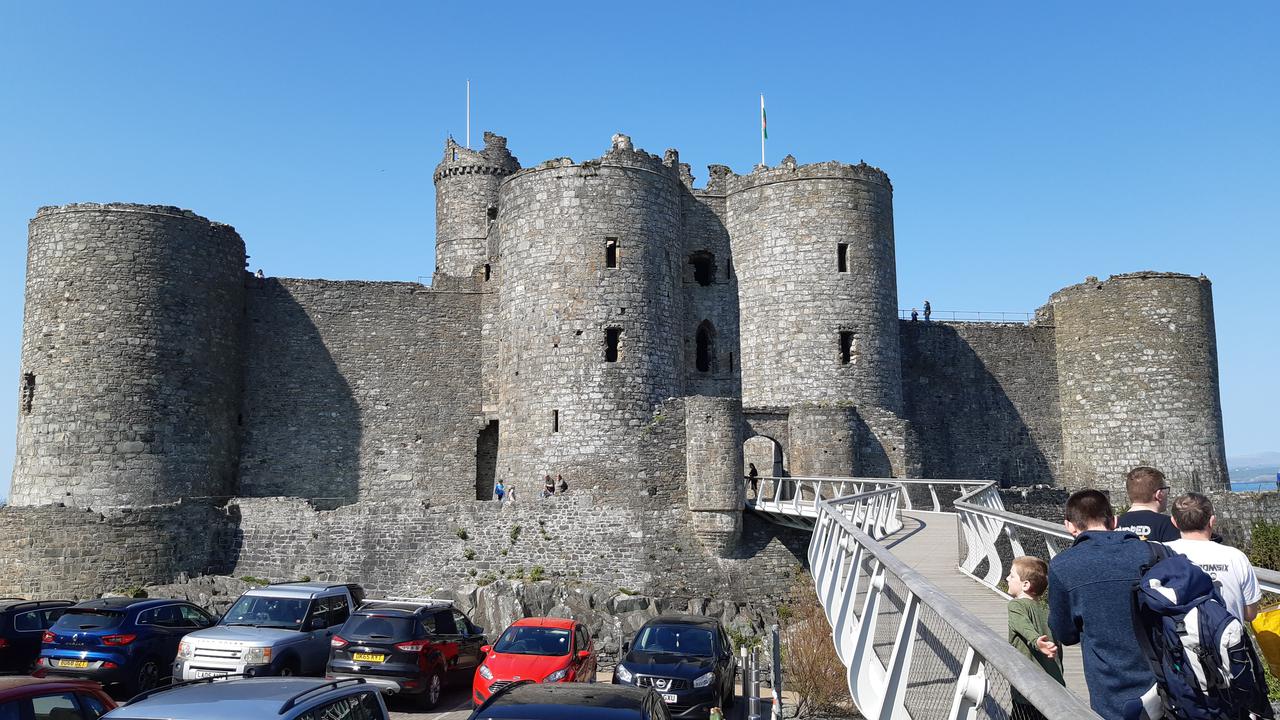
This well preserved ruin is an imposing sight so we imagined it would be very busy with tourists, due to its prominence. Yet the village was relatively empty and we easily got into the castle.
Not only was the castle an amazing sight, but the views from it were magnificent as we were able to take in a full panorama from the Irish sea to the mountains of Snowdonia.
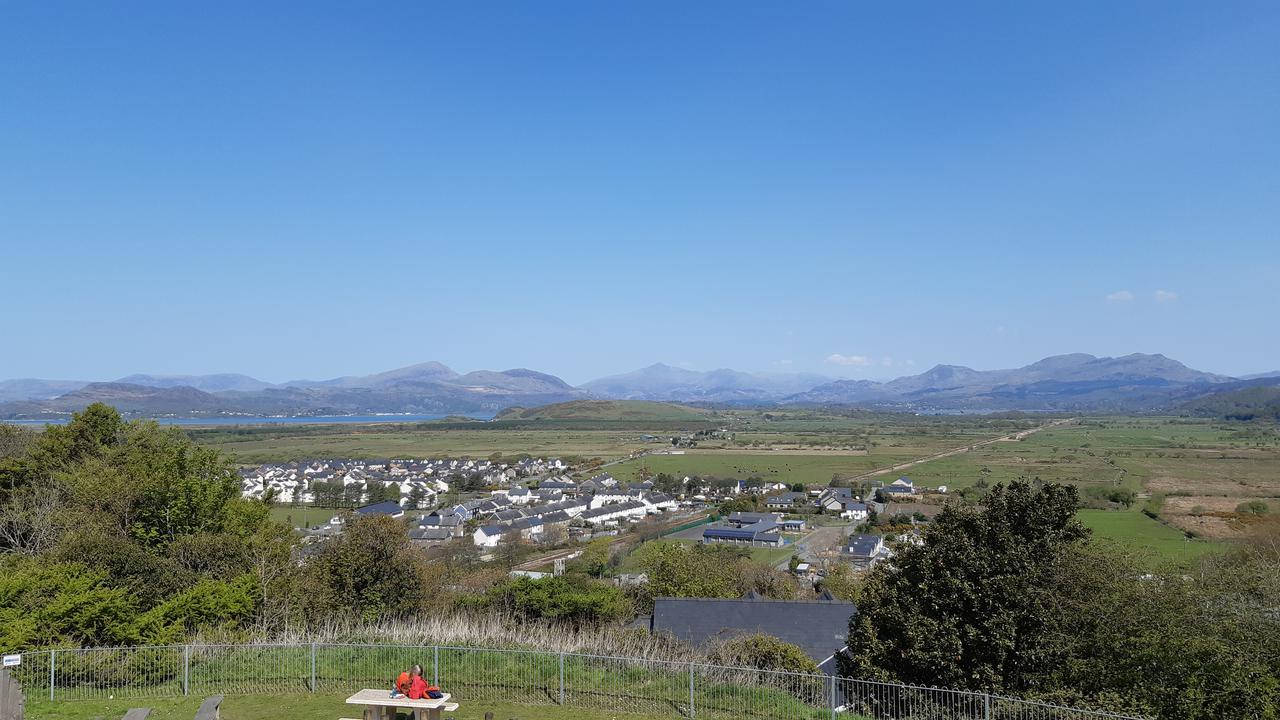
Because of its good state of repair, it was possible to explore many different parts of the castle. For instance, we walked up and down spiral staircases to get to the battlements and then to the very highest tower. I'm OK with heights but Mary (and several others) found the drop from the walls rather intimidating and so we didn't spend that long up there. Luckily it was a bright sunny day with little wind to speak of, otherwise I imagine the reaction of folks might be very different.
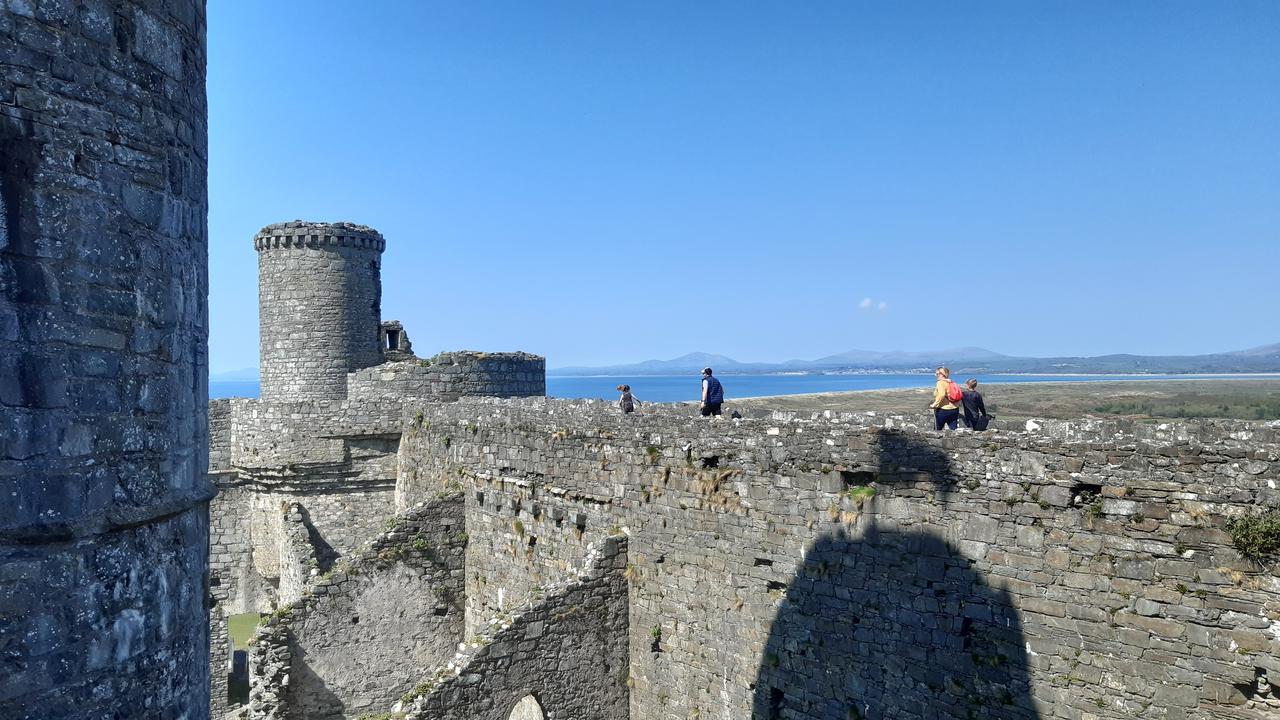
As we were having our lunch we noticed a cameraman and several people faffing about and talking about "positioning", "shots" and "delivery". One of them, a lady in sunglasses, spotted us watching the events unfold and came over to explain what was going on.
It turned out she and her colleague were professional story tellers specialising in Welsh legends (particularly, the Mabinogion), and were at Harlech to tell stories in both English and beginner level Welsh, to help keep this beautifully musical language alive. The UK's ITV news had turned up to do a short feature on their work and were just filming a talking head segment in front of the castle before filming the actual story telling in the castle.
We didn't realise such bardic activity was going on, but both of us love listening to a well told yarn, so quickly finished our lunch and headed back over the bridge into the castle.
Inside we found perhaps a hundred people sitting on benches, low walls and the grass as our bespectacled friend started to tell us a story. I won't describe stories she and her colleague told. Rather, I heartily encourage you to seek out such folk and let them cast their magic. In our case, as they told their tales in Harlech, the story tellers embodied and communicated the worlds they described in a way that only an oral story teller can. The best special effects happen as part of the story seen inside one's head, the interaction between the story teller and their audience adds an extra dimension of connectivity to the telling of tales that our screen laden world often lacks and, ultimately, our stories are just that... connections between ourselves that deeply and fundamentally move and speak to us through distances of time and space.
Here's the video segment broadcast by ITV, it is but a shadow cast by the brilliance of their story telling:
We must have spent hours in the castle, since we both mentioned exploring the village of Harlech at the same time. Almost immediately we discovered a small ice cream shop, selling home made produce made earlier in the day. This was some of the best ice cream either of us have ever tasted, and the owner explained how she hand made the produce fresh each day. Clearly this woman had a passion for ice cream, and we could taste it in abundance.
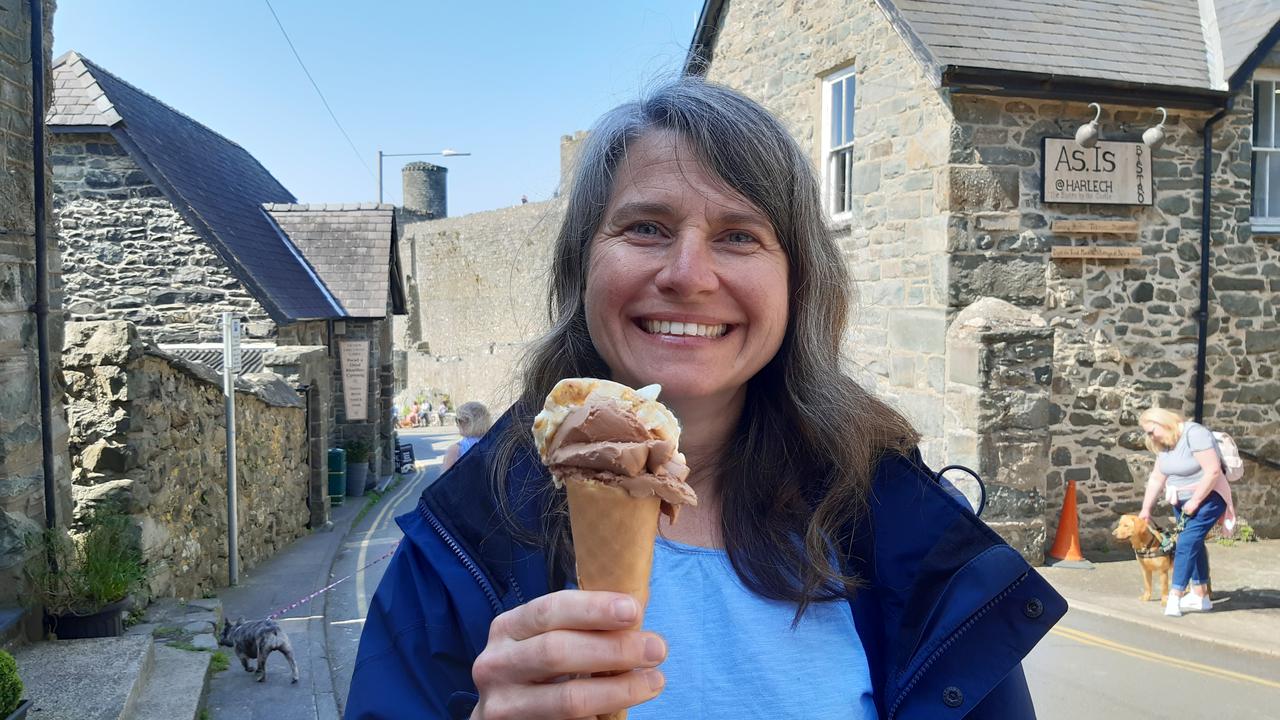
Just around the corner was an knick-knack shop in which I found a piano. On the music stand was Debussy's Clair de Lune (which I know), so I rattled it off, after finding a very convenient candelabra to help free up a hand.
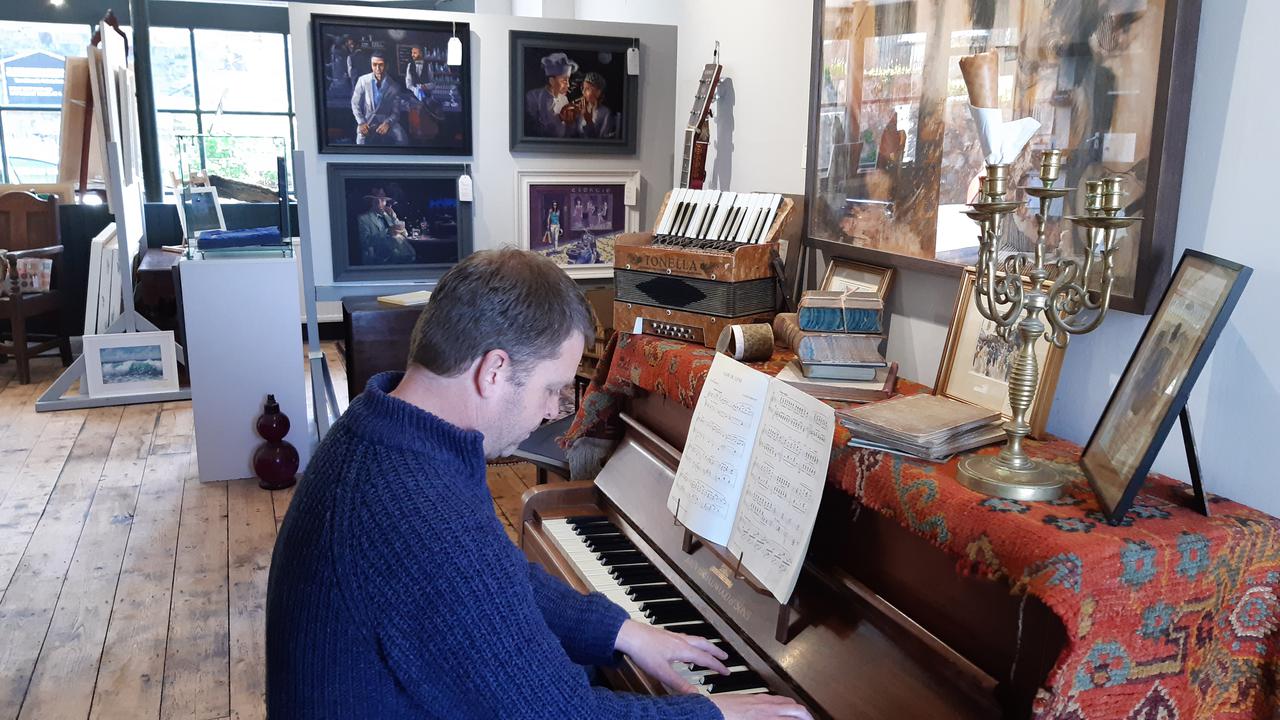
It was lovely to play after more than a week away, and I even got a round of applause!
Upon leaving Harlech we decided to take the long and winding road over the mountains of Snowdonia, just to take in the views and make space for enjoying a slow and gently winding journey together.
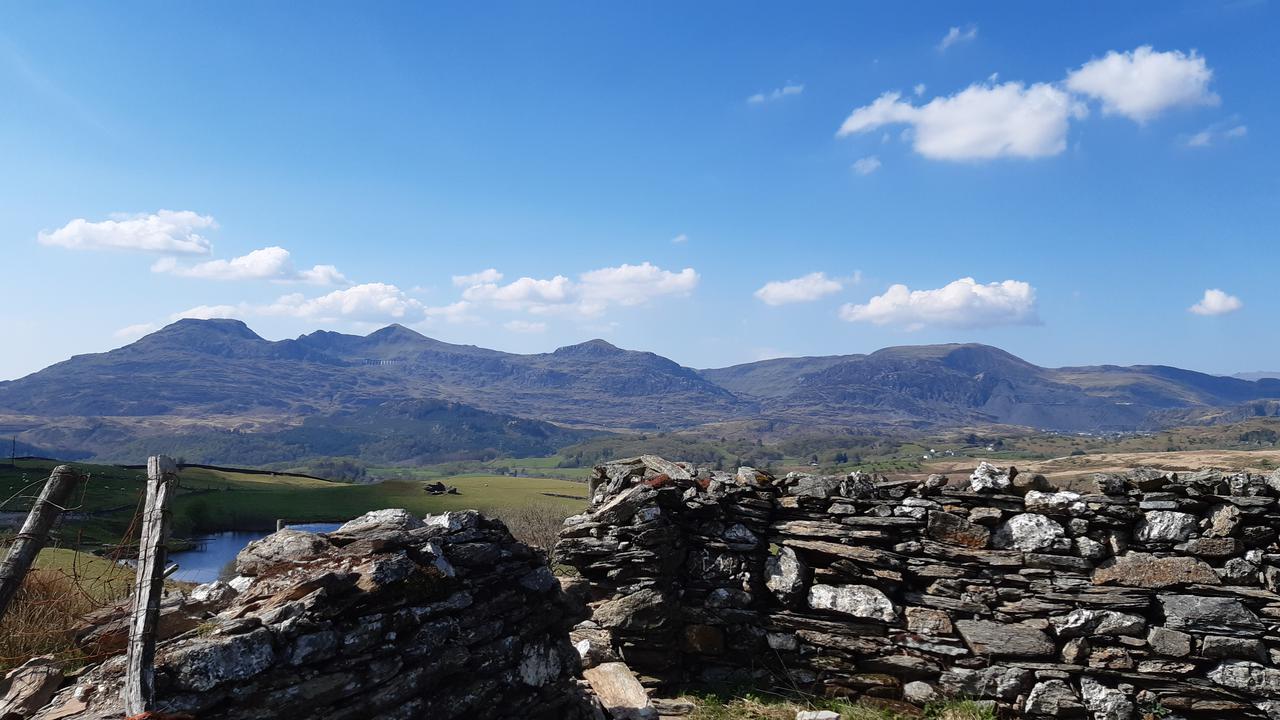
On the morning of our final day (today), we finished the last of many full breakfasts and set off for Prestatyn to conclude our walk.
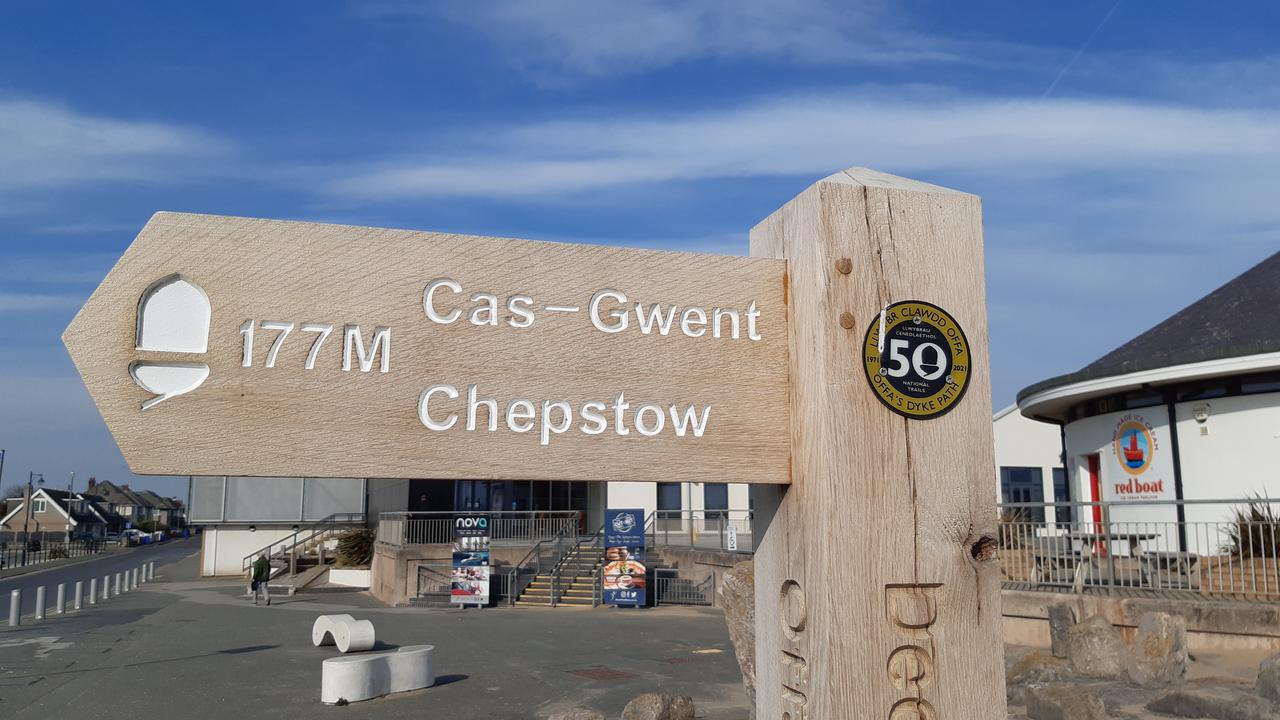
Little did we realise, almost a fortnight ago, how different our adventure along Offa's Dyke would be, compared to what we had imagined or prepared for. We certainly enjoyed walking the first third of the trail (almost 60 miles), and we both reflected that the injuries and improvised change to a touring holiday had taught us a lesson: go with the flow, and unexpected change is to be embraced and welcomed if you're going to make something of it.
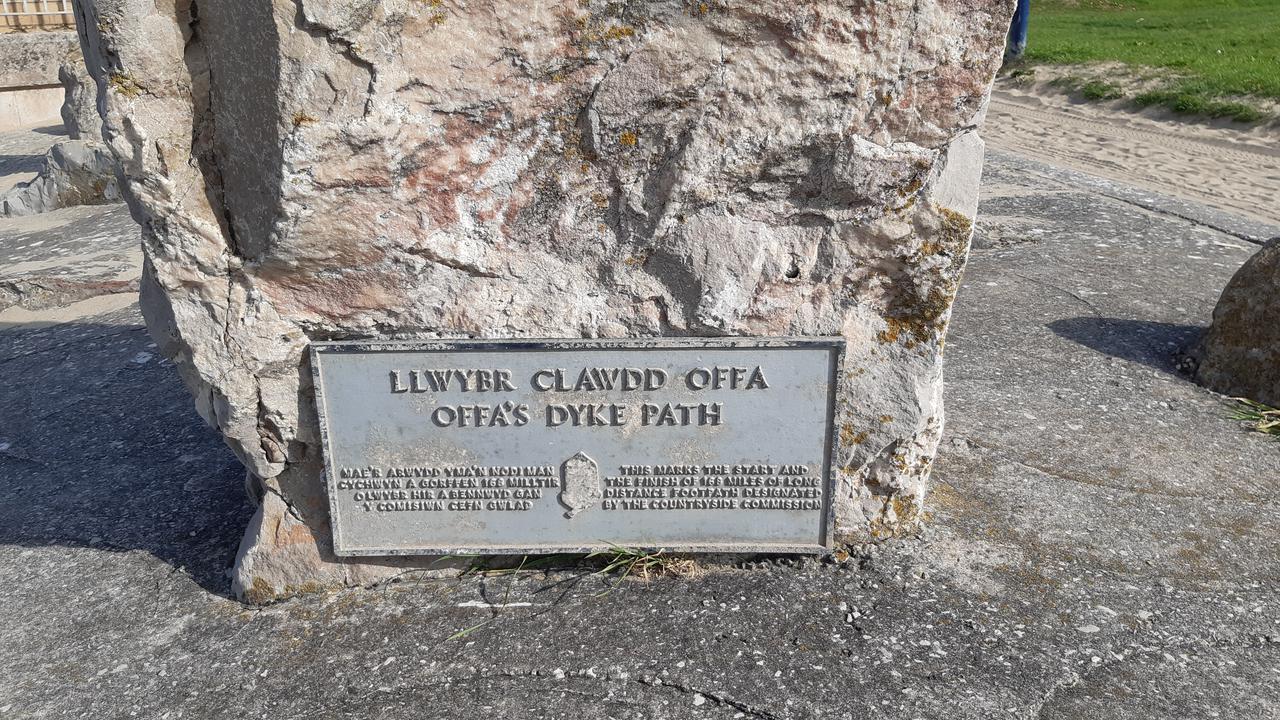
In the end, as I write this back at home in Towcester, both Mary and I feel glad to have returned after our journey together. We're especially looking forward to seeing our children again and giving them gifts we found on our way.
But I think this won't be the last time Mary and I do this.
We've had too much fun not to do it again.
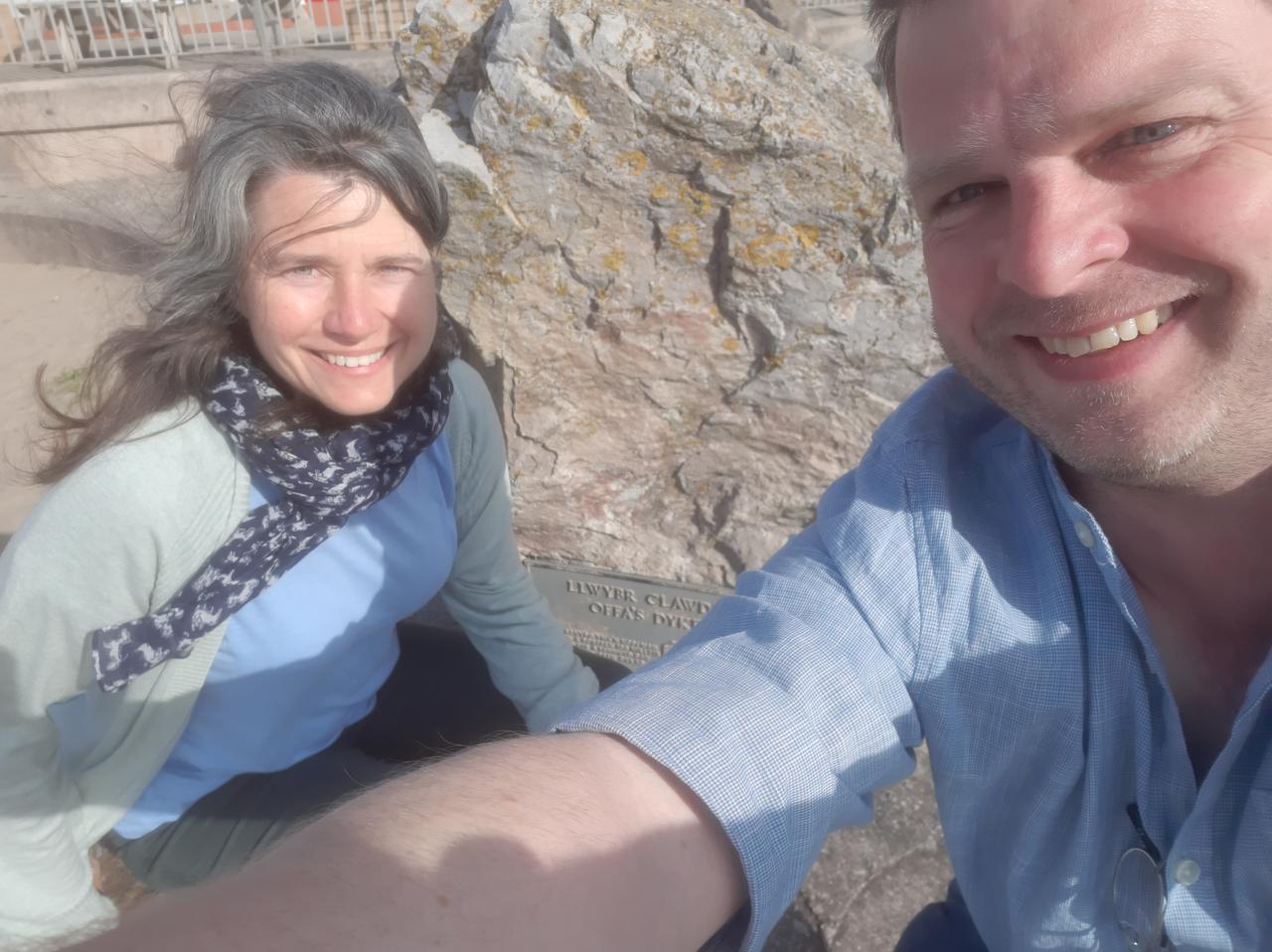
Onwards!